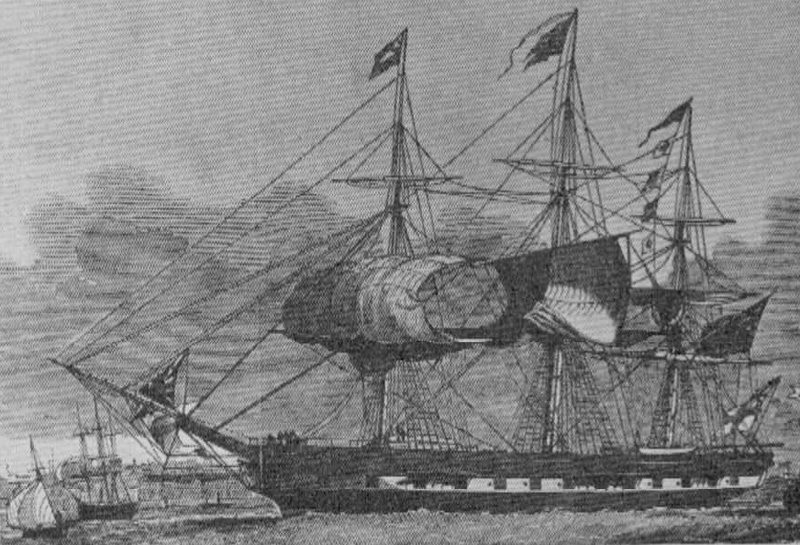
HISTORICAL EVENTS THAT TOOK PLACE ON THIS DAY IN CANADA
17 April

The Marco Polo, 1851
Marco Polo Launched
The Marco Polo was launched at Saint John, New Brunswick, on April 17, 1851. In those days the harbours of the Maritimes were ringing with the hammers of men making wooden ships to sail the Seven Seas.
Marco Polo was the fastest ship in the world in her day, and her speed was said to be due to an accident that occurred when she was launched. She went down the launching ramp too quickly, shot across Marsh Creek where she was built and settled in the mud. Fortunately, the heavy spring tide was enough to get Marco Polo righted and there did not seem to be any great damage. Later, when the ship showed such speed, it was said that the accident had twisted her frame in such a way that she sailed faster than had ever been intended.
The Marco Polo was an ugly duckling that became a luxurious passenger liner. She was built as a "drogher" for carrying lumber to Britain. Even then, she showed such speed that she was bought by the Black Ball line which needed ships for the Australian trade.
Marco Polo was transformed into the most luxurious passenger liner afloat, with a copper-sheathed hull, maple-panelled cabins, mirrored pillars ornamented with coins, deep pile carpets, and red velvet upholstery, all set off by mahogany with gilt and silver fittings.
Marco Polo's first captain was "Bully" Forbes, who predicted that his ship would astound the world. She spread her great white sails for the first voyage to Melbourne with 930 passengers, and was hack in Liverpool in six months. It was a record, and Marco Polo had a sign strung between her masts that read "Fastest Ship in the World." In 1867, the year of Confederation, Marco Polo made a trip from Australia to Britain in seventy-six days, beating the new-fangled steamer Great Britain by more than a week! Unfortunately, steamers with iron hulls replaced the "wooden ships with iron men", and the Marco Polo was transformed into her original ugly-duckling form, as a lumber carrier. A wreck, she went home to die on Cape Cavendish, Prince Edward Island.
OTHER NOTABLE EVENTS ON THIS DAY IN CANADIAN HISTORY
17 April
-1610 Henry Hudson sailed from London to discover Hudson Strait.
-1760 Brigadier de LÚvis left Montreal to try to recapture Quebec.
-1790 The export of wheat, oats, flour and meal was prohibited to try to reduce high prices.
-1840 Benjamin Lett blew up Brock's Monument at Niagara Falls.
-1855 Charlottetown was incorporated as a city.
-1862 The legislative council of Prince Edward Island was made an elective assembly.
-1866 The Nova Scotia Legislature voted for union of the maritime colonies.
-1903 Barr colonists arrived at Saskatoon (see April 10).
-1916 A New York grand jury indicted Baron Von Papen for conspiracy to blow up the Welland Canal.